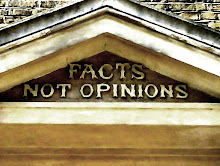In 1947, the 24-year-old test pilot Chalmers “Slick” Godlin didn’t become the first pilot to break the sound barrier. Though slated to be the first in the field, he – not unreasonably – wanted $150,000 in hazard pay from the Bell Aircraft Corporation if he was going to travel at 800 mph in a plane that had every chance of falling apart in mid-air. The US government took over the project instead and gave the job to Chuck Yeager, who, at regular US Air Force pay, came a lot cheaper than Godlin.
There is evidence, however, to show that another pilot, George Welch, broke the sound barrier a couple of weeks before Yeager. Flying an F-86 at the same air base as Yeager’s experimental X-1, Welch was under strict instructions not to break the sound barrier in his aircraft before the X-1. He dived from 35,000 feet, however, and ground crews reported hearing a sonic boom. As it was in a gravity-assisted dive, rather than on the level, Yeager is in the record books and Welch is forgotten.
In 1964, NASA and the Federal Aviation Authority decided to further their knowledge of sonic booms by conducting a series of tests in Oklahoma called – honestly – Operation Bongo II. Specifically, they generated eight sonic booms a day, beginning at 7am, for a period of six months. Five years and 15,000 complaints later, the government lost a class action lawsuit brought by the people of Oklahoma City.
If you’re a dominatrix or a cowboy, or are close friends with one, you’ve probably experienced a sonic boom for yourself, albeit at a small scale – the crack of a whip is caused by the tip moving at supersonic speed.
Wednesday, 5 November 2008
Subscribe to:
Posts (Atom)
